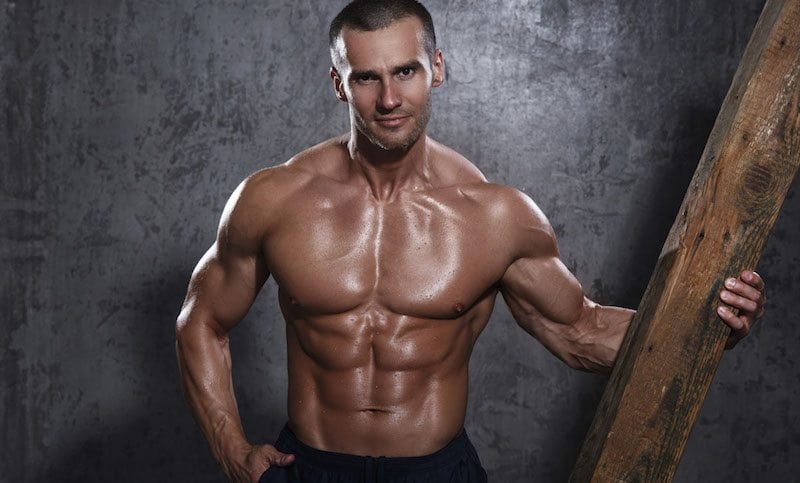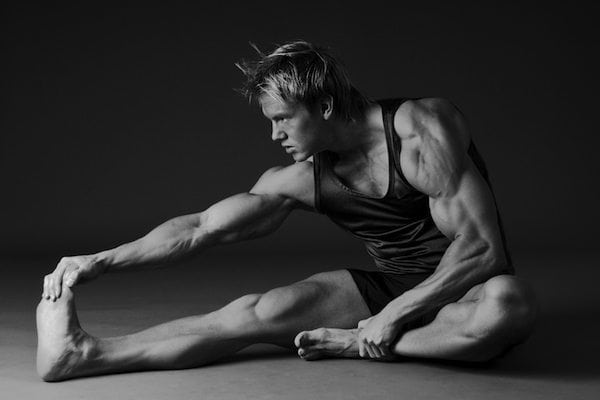No products in the cart.
Bodybuilding Workouts for Mass & Strength Gains

If you are looking to pack on some hardcore muscle, then choosing the best work out to suit your training needs and goals should be top of your agenda (don’t forget that a diet plan also has an important part to play).
There is a huge variety of work out available so you need to have a baseline knowledge of the factors that contribute to you gaining some serious muscle mass. A work out program that incorporates all of the principles will add to the success of your training schedule.
Let’s briefly discuss what to look for in a workout along with some of the popular current workout regimes.
This strategy will give you the option of tailoring any of the workouts to match your unique training needs. Are you ready? [toc]
The Main Lifts
A good strength and mass building program should be designed by performing a main lift which is then followed by some assistance lifts.
The main lifts should be performed within a range of 85-90% of 1RM and the number of reps of the main lifts drops to between 10 to 20 reps. However, if you are pumping over 90% of your 1RM then your total number of reps should cut significantly to around 10 or below.
To improve your total training volume you should use a range of 2-4 reps per set whilst executing the exercise at 85-90% of your 1RM.
If you are lifting above the 90% 1RM marker than reduce your reps to 1-2 per set. Your rest intervals in between each main lifting set should be 3-5 minutes because the load of the weight is neurologically more demanding than using lower weights.
A good number of main lifting exercises per session should be around 3 to 5!
Assistance Training
Assistance exercises can benefit you in a number of ways:
- They help to focus on a particular area involved in the main lifts e.g. focusing on hamstrings for squatting and deadlifting
- They can focus on a particular part of the event where you are weak e.g. performing rack pulls to help with the lock out when deadlifting
- Assist the muscles used in the main lifts in a slightly different way e.g. performing an overhead press to help with bench press
- They help to break through strength plateaus by working on areas of weakness by improving form and technique of the main lifts
- They help to prevent injuries caused by the muscles overcompensating due to poor techniques in the main lifts
Assistance training for absolute strength outcomes is totally different than what is used for hypertrophy training.
Unfortunately, many new strength lifters tend to fall at the first hurdle because they have overloaded their central nervous system. The main issue is that beginners tend to treat strength training as if they were performing hypertrophy training with lots of sets, reps and training volume.
This strategy will end in disaster and trying to maintain the same volume and intensity as hypertrophy training is a road to injury and failure!
You should be performing strength assistance training with a higher rep range of around 15-25 with a load of between 70-80 1RM.
In terms of the number of exercise being performed this drops to the 2-4. Without this reduction it would be become very difficult for you to recover. If you did continue to overburden your body with more stress than it can accommodate this is when overtraining kicks in.
Overtraining is a physiological and psychological state that can be avoided if you follow the simple strength training guidelines that have been discussed.
The exercises within assistance strength training should be selected so that you can rectify any weak points in your main lifts.
For example, if you have reached a point where your back strength is stopping you from making progress when performing the deadlifts. Then realistically you should be working on back strength – as this would dramatically increase your strength gains in that area.
The 5×5 Set Up

The 5×5 training plan is very popular amongst bodybuilders who are pursuing large gains in strength and muscle mass.
It is simple to follow – you execute three exercises that focus on the main muscle groups, these incorporate both lower and upper body compound exercises.
Each of the 5 sets consists of performing repetitions hence the name 5×5. Many bodybuilders like to add in some isolated exercises into the mix but this is optional.
The main benefit of using this training structure is that you can boost the frequency that you train and by recruiting a large number of muscle fibres on a daily basis will significantly boost your testosterone levels.
It is common knowledge that the anabolic hormone testosterone is a major player in building serious muscle mass. For this protocol lift between 65%-75% of your 1RM and adhere to the sets, reps and rest intervals in the tables below.
Work Out Sample 1
Do the following exercises with 5 sets of 5 reps with a 90-120 second rest period:
- Sumo Barbell Squats
- Deadlifts
- Barbell Glute Bridges
- Bent Over Rows
- Barbell Chest Press
Work Out Sample 2
Again 5 sets of 5 reps with a 90-120 second rest period:
- Kettlebell Military Press
- Front Squats with 2 Kettlebells
- Kettlebell Swings
- Lunges with kettlebell
- Kettlebell Standing Rows
German Volume Training

German volume training involves focusing on 2 major muscle groups per session whilst alternating them over a 3-4 days period. In terms of reps and sets, they both have a higher range than the 5x 5 model.
This type of work out is scientifically proven to build muscle mass at an unbelievably rapid rate and you really need to be on top of your nutritional profile; otherwise, you will burn out quickly!
For the workouts, you select a muscle group and pair it up with a compound exercise. Then you pump the exercises out at a powerful and fast tempo with 10 sets of 10 reps.
Once you have completed both sets of exercises you can then add in some isolated exercises.
It is probably best to start off with 2 sets of isolated exercises with a 10-12 rep range and keep the rest intervals between sets at 60-90 seconds.
A top tip is to reduce the weight that you are using down to around 60% 1RM because the set number and rep range is higher. You can always add more weight once you have built up your body strength.
Work Out Sample 1
- 10x Sets of 10 Reps – Barbell Military Press – 60/90 seconds rest
- 10x Sets of 10 Reps – Barbell Glute Bridges – 60/90 seconds rest
- 2x Sets of 2 Reps – Dumbell Front Raises – 60/90 seconds rest
- 2x Sets of 2 Reps – Donkey Kicks – 60/90 seconds rest
Work Our Sample 2
- 10x Sets of 10 Reps – Barbell Chest Press – 60/90 seconds rest
- 10x Sets of 10 Reps – Barbell Lunges – 60/90 seconds rest
- 2x Sets of 2 Reps – Calf Raises – 60/90 seconds rest
- 2x Sets of 2 Reps – Skull Crushers – 60/90 seconds rest
Work Out Sample 3
- 10x Sets of 10 Reps – Deadlifts – 60/90 seconds rest
- 10x Sets of 10 Reps – Bent Over Rows – 60/90 seconds rest
- 2x Sets of 2 Reps – AZ hammer curls – 60/90 seconds rest
- 2x Sets of 2 Reps – Plate Shrugs – 60/90 seconds rest
Fascial Stretch Training

One of the main objectives of this type of training model is to stretch the fascia tissue which is the soft tissue that surrounds all of the skeletal muscles. The fascia tissue has three roles within the body and these include the following:
- Provides the structural integrity of the body
- Support and protection of the musculoskeletal system
- It acts as a shock absorber when moving throughout the day e.g. pumping weights
There is evidence to suggest that when the fascial tissue is stretched there is a higher delivery to the muscle tissue of nutrients, essential hormones and oxygen.
This strategy can increase your muscle mass if the program is performed correctly. For this model to be effective you need to perform 7 sets of 15 reps for the last set of each muscle group.
Try to keep your rest intervals around the 90-second mark apart from the 7 set part of the workout. Then you can reduce the rest intervals to 60 seconds. Follow the 7 days workout plan and see a big difference in your muscle mass gains:
1. Triceps, Biceps & Calves
- AZ Hammer Curls – 3x Sets – 8-12 Reps – 90 secs rest
- Dumbell Curls – 3x Sets – 8-12 Reps – 90 secs rest
- Chin-Ups – 7x Sets – 15 Reps – 60 secs rest
- Skull Crushers – 3x Sets – 8-12 Reps – 90 secs rest
- Close Grip Bench Press – 3x Sets – 8-12 Reps – 90 secs rest
- Diamond Push-Ups – 7x Sets – 15 Reps – 60 secs rest
- Seated Calf Raises – 3x Sets – 8-12 Reps – 90 secs rest
- Standing Calf Raises – 7x Sets – 15 Reps – 60 secs rest
2. Legs
- Barbell Squats – 3x Sets – 8-12 Reps – 90 secs rest
- Barbell Lunges – 3x Sets – 8-12 Reps – 90 secs rest
- Bulgarian Split Squats – 3x Sets – 8-12 Reps – 90 secs rest
- Barbell Deadlifts – 7x Sets – 15 Reps – 90 secs rest
3. Chest
- Barbell Chest Press – 3x Sets – 8-12 Reps – 90 secs rest
- Incline Chest Press – 3x Sets – 8-12 Reps – 90 secs rest
- Dumbbell Flies – 7x Sets – 15 Reps – 90 secs rest
- Decline Chest Press – 3x Sets – 8-12 Reps – 90 secs rest
- 180 Degree Twisting Incline Dumbbell Bench Presses – 3x Sets – 8-12 Reps – 90 secs rest
- Forward leaning dips – 7x Sets – 15 Reps – 90 secs rest
4. Back and Calves
- Bent-Over Barbell Rows – 3x Sets – 8-12 Reps – 90 secs rest
- T Bar Rows – 3x Sets – 8-12 Reps – 90 secs rest
- Lat Pull Downs – 7x Sets – 15 Reps – 90 secs rest
- Seated Cable Rows – 3x Sets – 8-12 Reps – 90 secs rest
- Pull-Ups – 7x Sets – 15 Reps – 90 secs rest
- Seated Calf Raises – 3x Sets – 8-12 Reps – 90 secs rest
- Standing Calf Raises – 7x Sets – 15 Reps – 90 secs rest
5. Shoulder, Biceps and Core
- Military Press – 3x Sets – 8-12 Reps – 90 secs rest
- Shoulder Press Push-Ups – 3x Sets – 8-12 Reps – 90 secs rest
- Lateral Side Raises – 7x Sets – 15 Reps – 90 secs rest
- AZ Hammer Curls – 3x Sets – 8-12 Reps – 90 secs rest
- Dumbell Curls – 3x Sets – 8-12 Reps – 90 secs rest
- Chin-Ups – 7x Sets – 15 Reps – 90 secs rest
- Kettlebell Swings – 3x Sets – 8-12 Reps – 90 secs rest
- Hanging Leg Raises – 7x Sets – 15 Reps – 90 secs rest
In Conclusion
Whichever workout you choose it is important that you push yourself 100%. If you are not achieving progressive overload each workout then you are not going to experience hypertrophy.
Failure to achieve hypertrophy will mean that you are not going to gain muscle mass or strength.
Also, remember that while your workouts are important. Your nutritional needs are more important. This is why I would recommend reading the following article next.
Save

Can you build mass with bodyweight exercises?
Yes, as long as you are willing to be patient and determined.
To build mass simple press ups won’t cut it. You need to overload your body, as you would with weight training. So instead of doing endless reps of normal press ups, try and do 10 one-arm press ups. Working your fast-twitch muscles will give you the greatest opportunity for muscle growth.
Yea, but which one would you prefer?
I’m a big fan of Stronglifts 5×5 because of its simplicity. And the fact it gives good results.
I also like to use Stronglifts. Its simple and for me gives results.